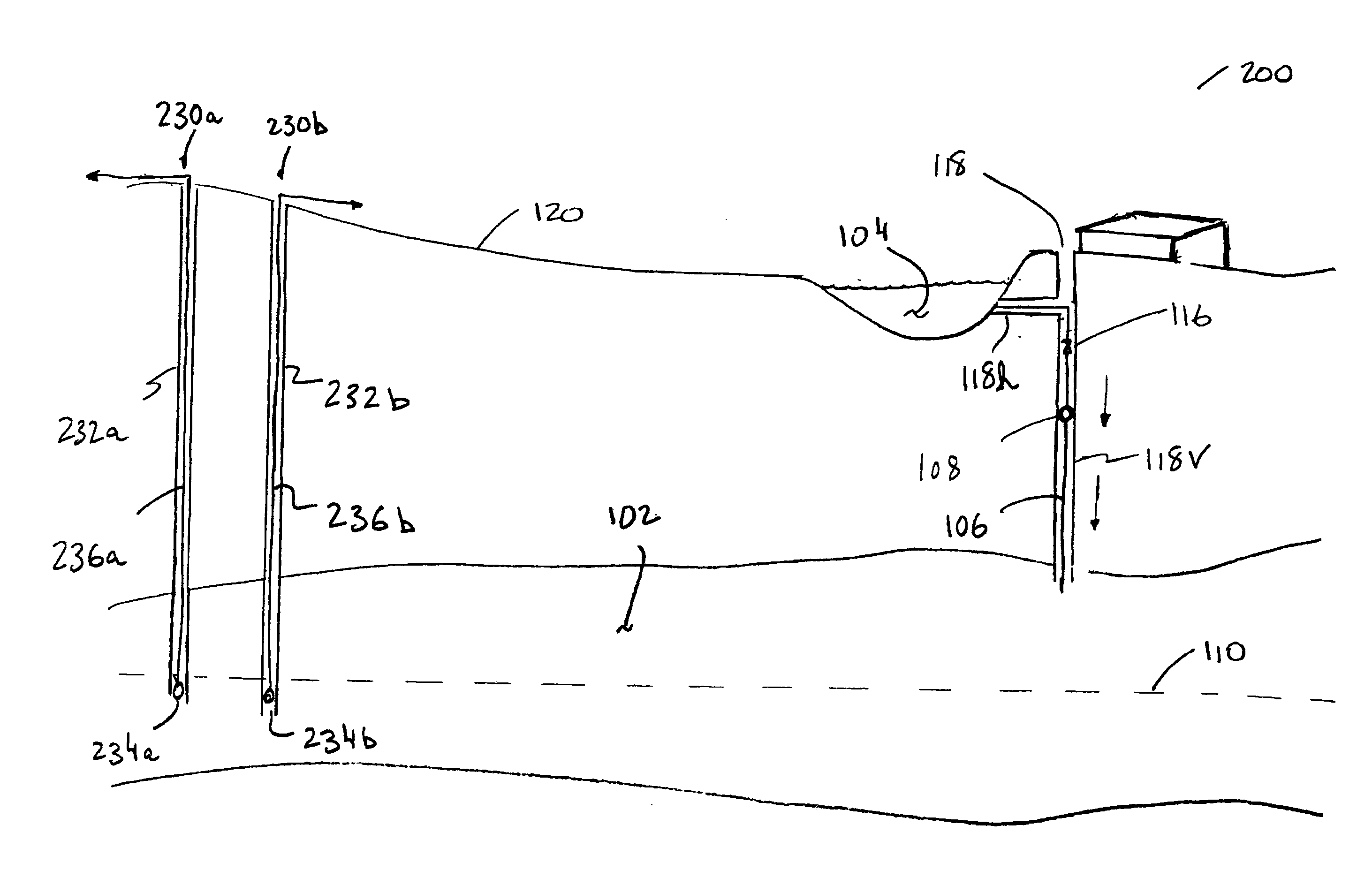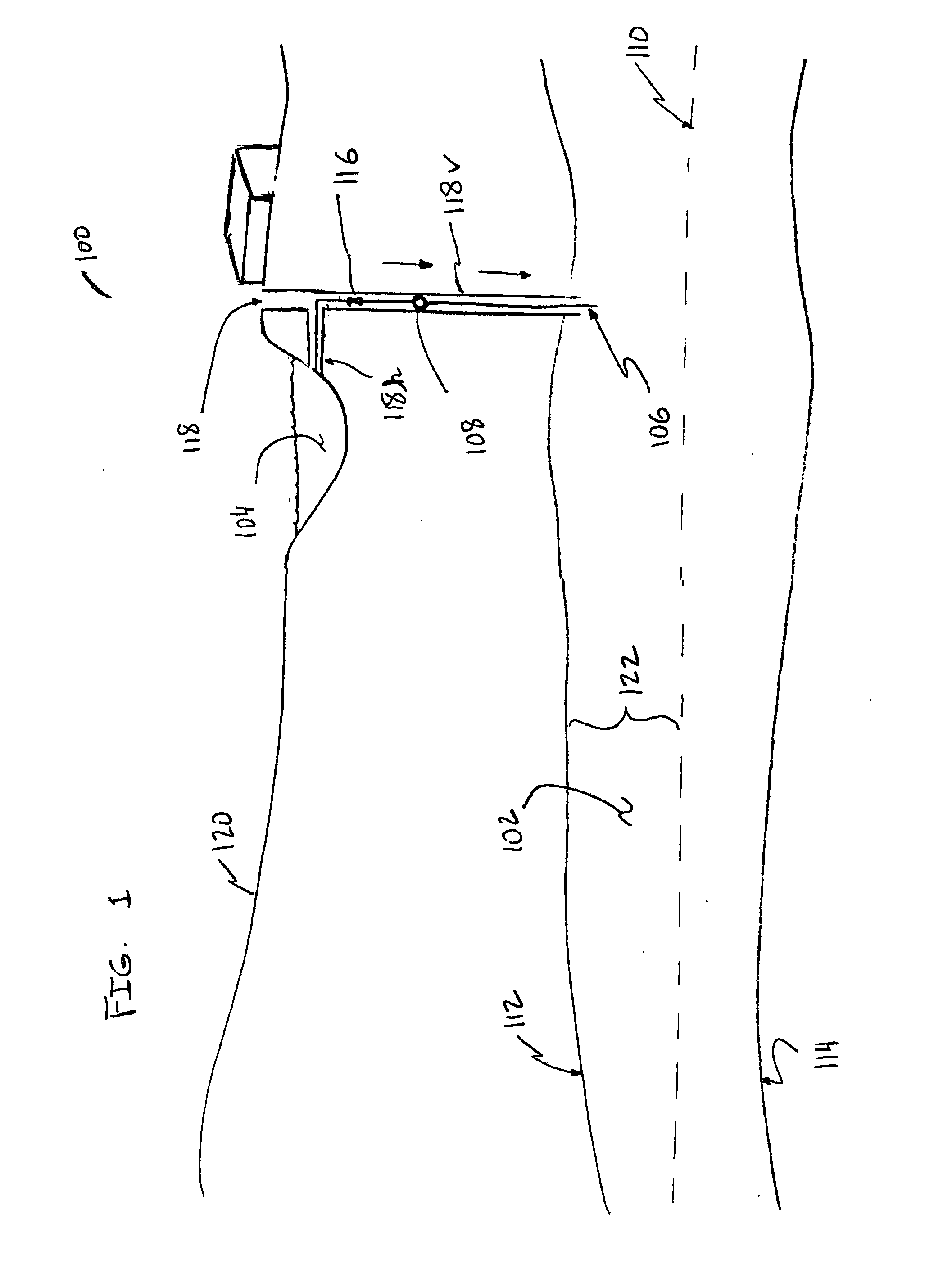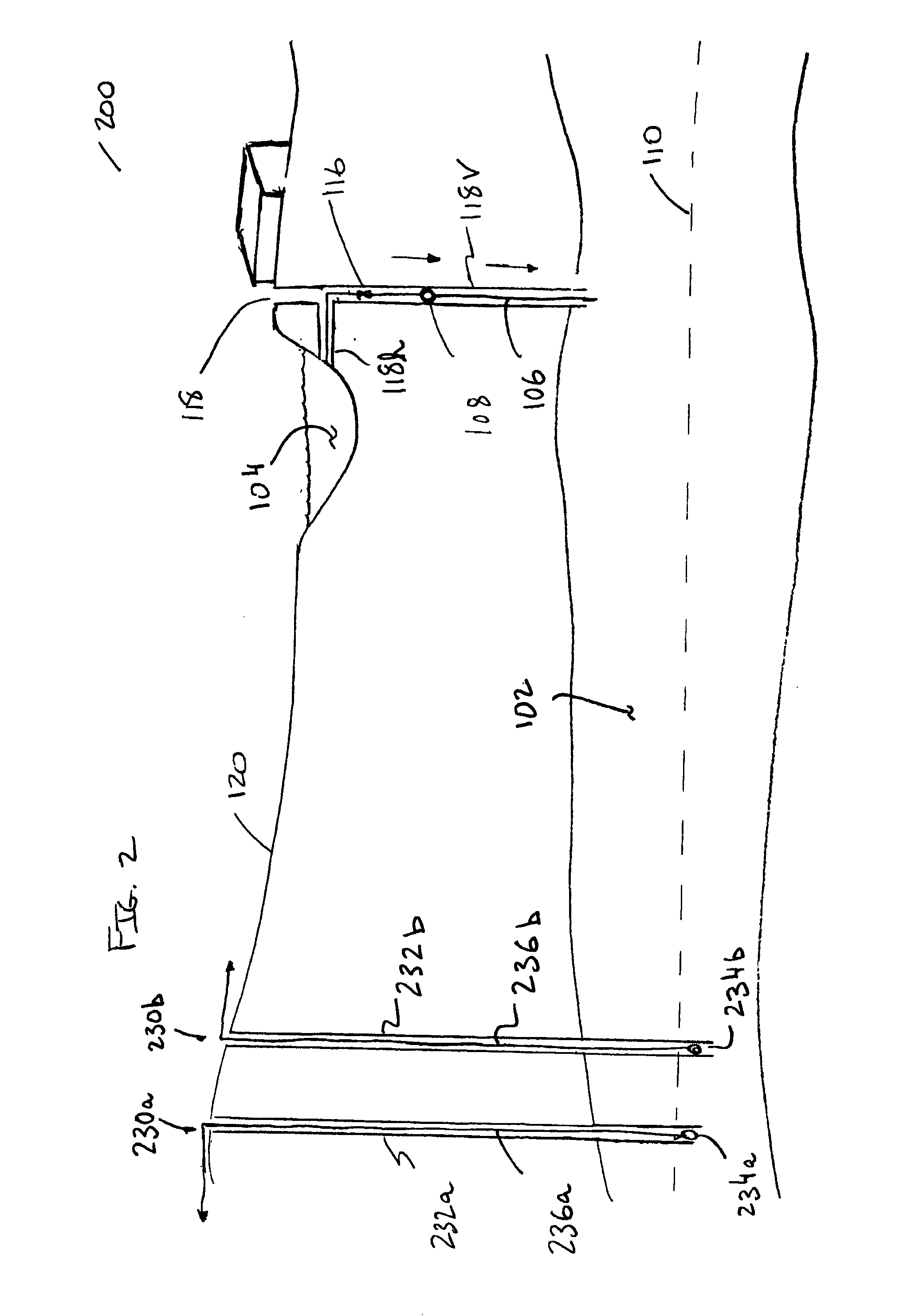Aquifer-based hydroelectric generation
a hydroelectric generation and aquifer technology, applied in the direction of electric generator control, sewer pipelines, machines/engines, etc., can solve the problem that the system does not include any pumps to move fluid, and achieve the effect of reducing the amount of greenhouse gas produced, low cost, and affordable ra
- Summary
- Abstract
- Description
- Claims
- Application Information
AI Technical Summary
Benefits of technology
Problems solved by technology
Method used
Image
Examples
Embodiment Construction
[0033]FIG. 1 is a schematic diagram of a system 100 that includes an aquifer 102 and an external source of fluid 104, which, in the illustrated example, is a lake at a higher elevation than the aquifer 102. A fluid communication channel 106 extends between the lake 104 and the aquifer 102. An engine-generator (e.g., a water turbine-generator 108) is arranged to convert the kinetic energy of fluid flowing through the fluid communication channel 106 from the lake 104 to the aquifer 102 into electrical energy.
[0034]In the illustrated system 100, the aquifer 102 is able to receive fluid from the lake 104. There are a variety of ways that an aquifer can have the ability to receive fluid from an external source, such as the lake 104. For example, the aquifer could be partially or completely depleted and, therefore, have a substantially fluid-free space inside the aquifer to store additional fluid. Aquifers can become depleted, for example, by being pumped or by virtue of fluid evaporating...
PUM
| Property | Measurement | Unit |
|---|---|---|
| energy | aaaaa | aaaaa |
| electrical energy | aaaaa | aaaaa |
| gravity | aaaaa | aaaaa |
Abstract
Description
Claims
Application Information
 Login to View More
Login to View More - R&D
- Intellectual Property
- Life Sciences
- Materials
- Tech Scout
- Unparalleled Data Quality
- Higher Quality Content
- 60% Fewer Hallucinations
Browse by: Latest US Patents, China's latest patents, Technical Efficacy Thesaurus, Application Domain, Technology Topic, Popular Technical Reports.
© 2025 PatSnap. All rights reserved.Legal|Privacy policy|Modern Slavery Act Transparency Statement|Sitemap|About US| Contact US: help@patsnap.com



